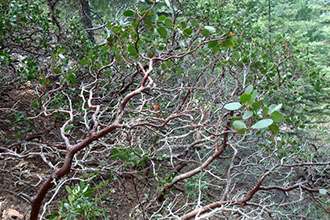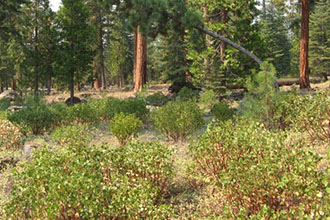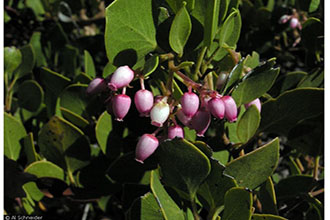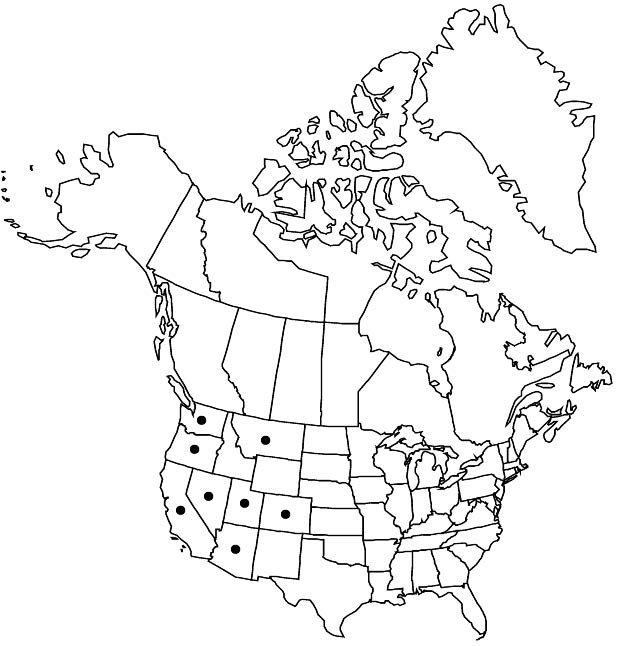Taxonomy: Kingdom - Plantae (plants). Subkingdom - Tracheobionta (vascular plants). Superdivision - Spermatophyta (seed plants). Division - Magnoliophyta (flowering plants). Class - Magnoliopsida. Subclass - Dilleniidae. Order - Ericales. Family - Ericaceae (heath). Genus - Arctostaphylos Adans. Species - Arctostaphylos patula Greene
Ecology: Greenleaf manzanita is a drought-tolerant shrub. Greenleaf manzanita is shade intolerant, prefers disturbed sites, and typically is an early to midseral species. Its ability to colonize quickly after disturbance and interfere with conifer seedling growth allows it to dominate for many decades after disturbance. Without further disturbance, conifers eventually overtop greenleaf manzanita. Greenleaf manzanita may still inhibit conifer growth after being overtopped until canopy closure shades it out. In the absence of further disturbance, it may take from 30 to 100 years for conifers to gain dominance over shrubs Greenleaf manzanita had many uses for Native Americans. The fruits were eaten whole, made into cider and jelly, and brewed into tea to treat poison-oak (Toxicodendron diversilobum) exposure.



